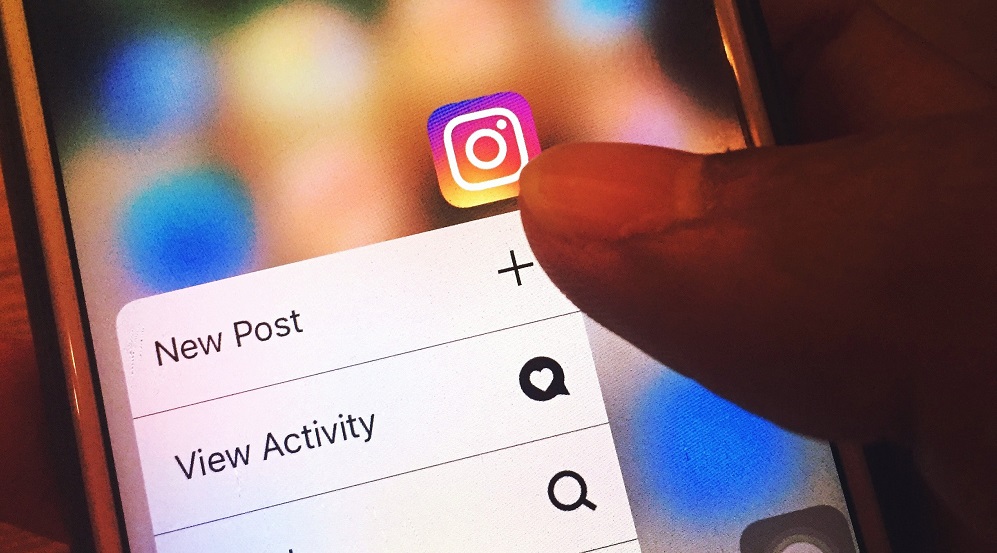5 Steps To Optimize Your Online Music Promotion
Maurice Hissink has been in your shoes. Like you, he spent days and nights crafting fantastic music. He put it on the Internet and tried reaching out to people. Almost no one paid any attention. Something had to be done!
Rather than sit around and complain, Maurice took matters into his own hands. He dedicated his time to mastering music promotion on social media and, slowly, everything became right. Let the man teach you how it’s done so you don’t have to walk the same difficult path to success!
How it started – Introduction Story
Making music is awesome. That is what I thought (and still think) when I started playing my old organ at home. When I found a great melody, I kept repeating it until the neighbors complained. Then I knew that I wanted to have a better audience than my neighbors. So I kept playing for years, created some mediocre songs and finally decided to put them online. I uploaded all my songs to SoundCloud, created a Facebook and Twitter page and…..Nothing happened…
No one listened to my music! What the freak? I spend so many hours on it! Then I started to upload my music to youtube. It was the same deal. No raving fans at my doorstep, not even after a few weeks.
When I started to analyze what I did and what I could improve, I found a lot of tips and tricks online. But on my journey to find the best strategy to market my music, I also found a lot of contradicting tips. After years of figuring out what works best in Social Media Marketing (because that will be the strategy to use if you are an Independent Artist), I decided to share that knowledge with you, the upcoming awesome artist. I wrote this Music Promotion Made Easy booklet to help you on your journey and take a few shortcuts. So enjoy and let’s start to promote your music!
A quick Social Media Marketing test
There are many musicians online, promoting their music. Can you spot the best example of which musician is using the best social media marketing below?
Musician A
Average posts per week – 500
Followers – 1500
Following – 4589
Interaction on last week’s post (likes, shares, comments) average of 2 hearts/likes
Musician B
Average posts per week – 100
Followers – 1500
Following – 75
Interaction on last weeks post, 50 hearts, 100 comments and 75 reposts.
Of course, this is a made up scenario, but let’s dive into the simple stats provided.
Musician A seems to be following more people than he has followers. Also, the interactions on his post are next to nothing. This depends on a lot of things, but you can figure out what he could be doing wrong. For example, is his post relevant to his audience? Is he following the right audience? Is he interacting with the audience he already has?
Musician B, however, seems to do pretty good. This is a good example of what you want to go for. He has a great follower to like/share ratio, has more followers than he is following and with just a couple of posts per month, he keeps his audience entertained.
Those are the things that work great on social:
– Share relevant content that people want to interact with.
– Engage with your audience and be social.
– Only follow those who you want to follow, without anything in return.
We are going to make your profile to become Musician B. The musician who shares valuable content finds an awesome audience and initially has the opportunity to sell his music.
Start at the beginning.
Step 1: Choose your best social media platform
Are you on social? What platforms do you use and do you feel comfortable with? Are your fans on the same social platform?
You can find out by searching for like-minded musicians in your music style and take a peek at their profiles and interactions. If they have a nice following (larger than the people they follow, more on that later) and have about 2 and 10% interaction on most of their post, you have found a good example. (Like in the introduction). If your social platform has a lot of like-minded musicians, you are good to go. That doesn’t mean you should avoid other or new social platforms. They can be a great opportunity to grow, depending on the types of members the platform has. (Like on Drooble 🙂 ) To successfully promote your music on social media sites, you need to know how they work.
Most social media sites have some things in common, like the ability to share text and images. The way they publish, create and share text and images varies from platform to platform. For example, where Twitter has a max of 280 characters, Facebook has the ability to use as many as you want. Instagram is more image related, so you have to use a good visual strategy there. As you can see, they all have their benefits, and some combine a lot of those, like Facebook and Drooble. On SoundCloud on the other hand, it shows that it is not a super social network perse. you can comment on songs, and add friends, follow and share, but the main focus is sound clips on Instagram the main focus is images.
As a start, you can use a platform that you are already familiar with. that way, you probably know how to share with others, engage with followers, add content and optimize your profile start with no more than two social networks. I won’t count SoundCloud as a social network at this moment, but only as a sharing and streaming service.
Your profile should rock!
When people first visit your account, it should be instantly clear that you are a musician, DJ, band or any form of artist. Your banner and profile image should match your content. you can use certain types of images, a color scheme, an image style, as long as it matches your style that way, your future fans know what to expect.
Personal or music?
The best way to showcase yourself as a musician is to present yourself as a musician. Аlthough that sounds obvious, it also means that you have to drastically change your profile. If you build a profile from scratch, this is not a problem. Add some clear images of you, your band or your work, like the example before.
If you want to transform your personal profile into a music profile, you have to make some drastic changes, changing the images is only the small part.
Depending on your following, you are perfectly fine if you make it clear within the first couple of messages. By doing that, you prepare the followers you already have, like friends and family, on the upcoming changes. Remember that your friends and family might not be your ideal audience, depending on your style of music. Although they can be a good start and might give you some honest feedback because you choose to make it a music-related page, however, you should remember to post relevant content related to music and your music project. Sometimes it might be a better idea to create a separate page for your music project. That way you can share personal updates on your own page, and music related messages on your content on your music page you can even choose to make your personal profile private so that only your friends and family can see it.
Step 2: Find your voice and tone
Your style is important. It can change over time, but you have to start somewhere. find a style within your music images, colors fonts and everything that is needed to present your music project the best way possible. Use that style on all social pages, and on your website. you can use images from your latest album, band pictures or some pictures of you playing in your home studio the more consistent they are, the more it gives your music project a professional look.
If you are not sure how to style your page, find some advice online about color schemes, fonts, and imagery, or consult a graphic designer.
Listen to your audience too. They can give you valuable feedback on posts and shares. sometimes you have to read between the lines, but you can find great information regarding your content here. Try to match their needs as much as possible, and balance it with your own content. If you end up with fans that only keep complaining, you can also double check if you are attracting the right type of audience. (More on that on the persona section below)
Step 3: Speak your melody
Your voice online should also match your style. This simply means that you should always approach your content the same way. If you like to talk about your new gear, latest live shows, recording sessions, keep it that way. If you like to talk politics, share personal opinions about cultural issues and the news, keep it that way. As long as it fits your style and is music related enough to entertain your fans, it is fine. If you always think twice before you share an opinion or statement online (do my fans want to hear this and are it helping my brand) then you should be fine. In doubt, share it on your personal profile. You can also create a separate facebook group or twitter chats to have the more detailed discussions. It will keep your timeline clean and focus on your music.
Step 4: When to post what?
If you have set your goal (which you should, as it helps your music marketing strategy) you should have an idea what to post and when. The most important thing you want to post is your music, but aside from that, you should also post other content. Why? By posting relevant content, like reviews, behind the scenes videos, making of videos and images and more. by posting related content like same bands/musicians, who else played on your live shows, other gear reviews that you want to buy or can test. share other bands latest song and try to build connections. do collaborations and share those. There are best times per day or per week to post certain content. You can find a lot of guidelines online, but you have to see what works for you. If you know what time of day your fans are most active, you can post just before or on that time to get the maximum amount of engagement.
Step 5: Analyze, repeat and engage
After you have been posting for a week or preferably a month, see what worked and what not. Which content got the most shares, likes, comments. Try to find more content that worked, and remove the content that didn’t work. Keep mixing it in a 70% other content and 30% own content and grow from there. Some good analytics to watch for are the following:
• Location
• Age
• Interest
• Type of content with the highest engagement
• Reshares
• Likes
You should be posting content that starts an interaction with your audience. The more the better. Just a like is good, a comment is better and a reshare even better. In the comment section, see who comments on your post, comment back and have a nice conversation, and thank them for their engagement. Find some nice words and be honest. Check who shared your content, and return the favor. Like and share relevant content on their page and follow them back.
This is also a great moment to spy on their page. If they post the same content as you, see what works for them, and engage with some high performing posts on their page. See who commented and reshared that content, and repeat the process. This can be done very quickly, and even if you do 1 of these checks per day, you will have 7 valuable checks per week. You will create a very strong audience with this tactic.
The more you engage with your audience, the more likely they will come back to your page.On some social media pages, content flashes by. A post from an hour ago could be lost on a timeline. Test out how much engagement works best for you to keep the momentum going. If you see engagement, you are on your way. Keep doing what you do to repeat the results.
to be continued…
Related Posts
1 Comment
Make the most of Drooble
Join Drooble
Find cool stuff
Music Cloud
 Music Feed
Music Feed
- We’ve Been Building New Platform Harmonies December 11, 2023
- Drooble Feedback Survey! August 22, 2023
- 📢 Exciting Announcement: Introducing Drooble’s New Management! August 10, 2023













I like your blog. Its one of the best blogs online